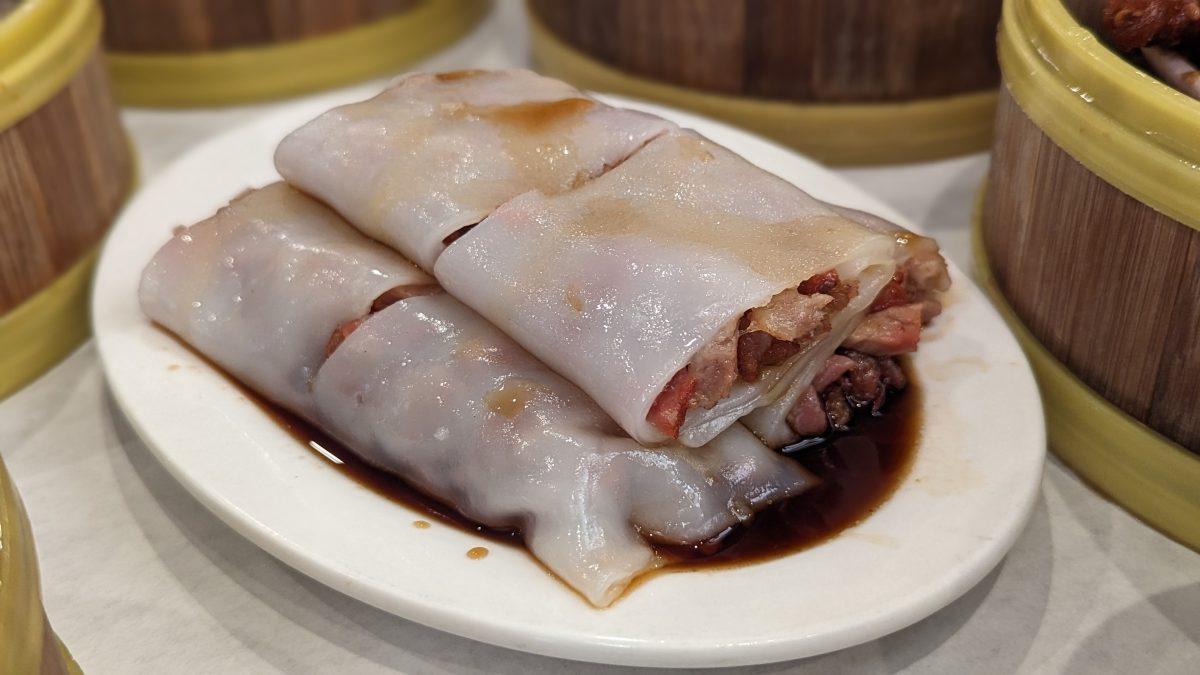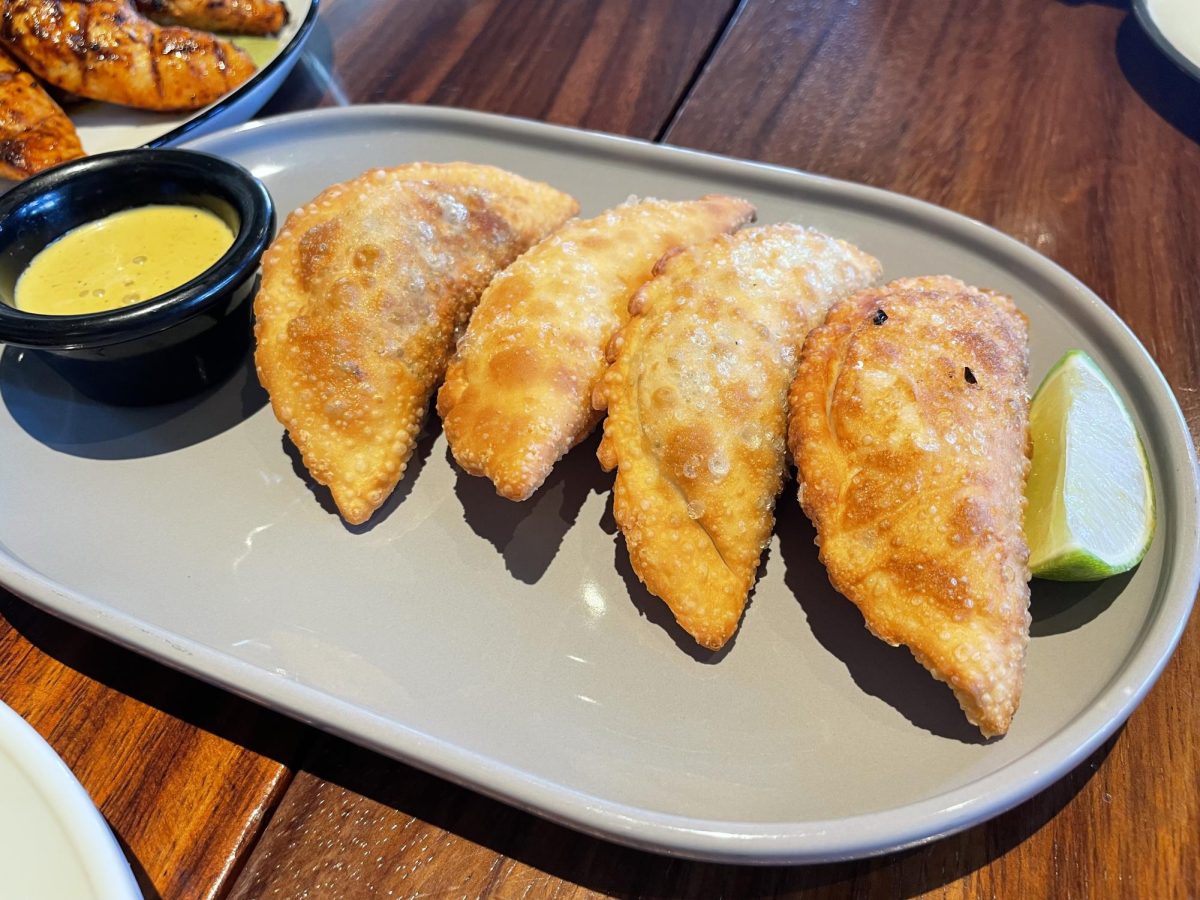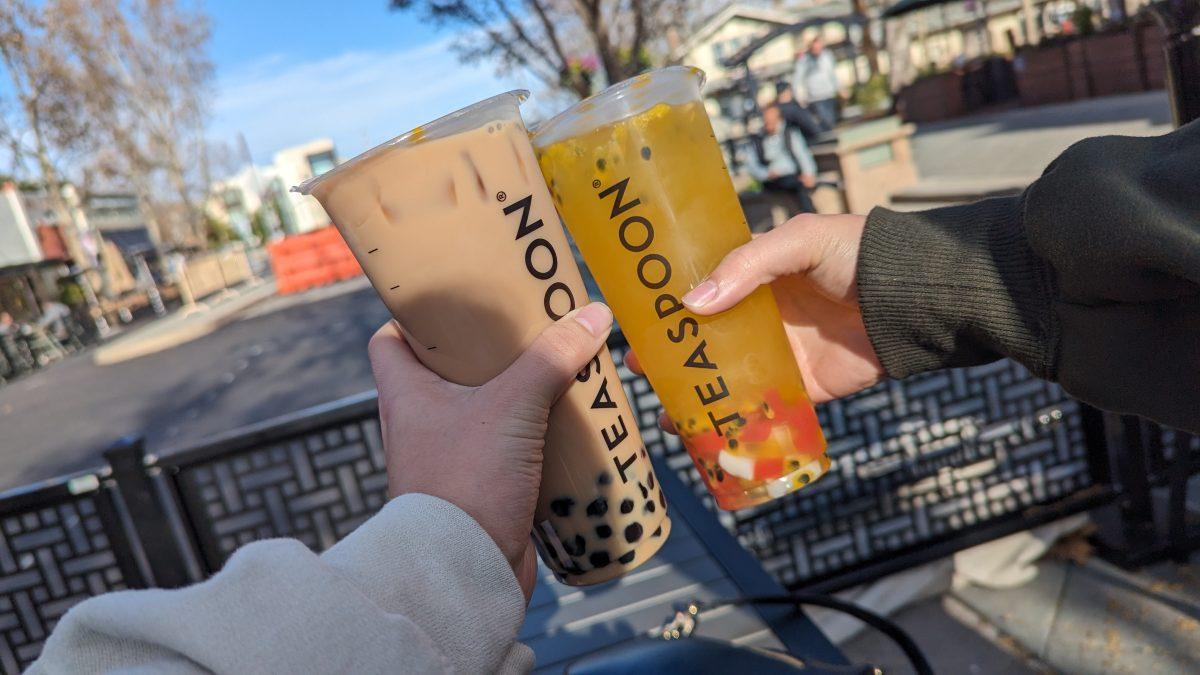Several crabs waved at us from an aquarium-like tank as we poured ourselves a warm cup of jasmine tea. The crisp white walls and the smell of delicious food created an inviting atmosphere at Fu Lam Mum, a Castro street classic specializing in Cantonese cuisine and dim sum. A dim sum meal usually consists of various smaller dishes on a 餐桌转盘 (rotating dinner table). These dishes are meant to be shared family-style, reflecting the role that food plays in creating a sense of community in Cantonese culture. We strongly recommend Fu Lam Mum because of its notable variety, flavorful dishes, and quick service.
Siu Lung Bao (7/10)
Invented in Shanghai, soup dumplings, or siu lung bao (which roughly translates to “little basket bun”), are a classic Chinese dish. The filling of these steamed dumplings is mixed with aspic, a gelatin made from solidified bone broth. The gelatin melts as the dumplings are cooked to become soup.
The chewy wrapper, savory meat, and sweet broth of Fu Lam Mum’s soup dumplings made for a delicious combination, and the acidity of the vinegar dipping sauce cut through the richness of the soup, adding a nice contrast that balanced out the dish. However, while we enjoyed the gingery filling and fragrant broth of these dumplings, there was not nearly enough soup in them. Additionally, the dumpling wrappers were a little too thick for our liking.
Nai Wong Bao (8.63/10)
Steamed buns are a staple in Chinese cuisine and come in varieties with many different fillings, both savory and sweet. Nai wong bao, or egg custard buns, are a type of steamed bun that originated in southern China.
These egg custard buns were filled with a thick, creamy, bright yellow custard that was the perfect combination of salty and sweet. The dough of the buns was soft and fluffy, with a subtle sweetness that complemented the salted filling.
Char Siu Bao (8.38/10)
Another type of steamed bun, called char siu bao, or barbecue pork bun, is one of the most classic dishes in dim sum. Dating back thousands of years, the dish was once a common food on the Silk Road because it was portable and a source of nutrition. Now, the dish’s savory barbecue pork filling and fluffy steamed bun are a must-have at any dim sum restaurant.
We enjoyed the flavors and textures of the char siu bao at Fu Lam Mum. The meat was pleasantly sweet and salty, and the bun was fluffy. We recommend this dish to anyone who visits the restaurant.
Char Siu Cheung (8.88/10)
Rice noodle rolls are a dish with humble origins dating back to the early Qing Dynasty, making it a long-time popular appetizer in dim sum restaurants. The square rice sheets are commonly served together with soy sauce, shrimp, meat, and vegetables.
Fu Lam Mum’s barbecue pork rice rice noodle rolls achieved a perfectly chewy texture which contrasted nicely with the meat. The soy sauce and the barbecue pork complemented each other well, and the meat was well-seasoned.
Fung Zao (7.5/10)
A classic dish enjoyed ever since the Zhou Dynasty, chicken feet, or fung zao, are popular in many Asian countries such as Vietnam, China, and the Philippines. Also known as “phoenix claws,” chicken feet are commonly eaten to bring wealth and luck to a family. They are usually braised and simmered in black bean sauce and topped with chopped onions and red chili slices.
We enjoyed Fu Lam Mum’s version of chicken feet, particularly the balance between the slightly spicy but sweet flavors. The chicken feet were especially meaty, and the black bean sauce was not too overbearing for the already indulgent dish. This chicken feet dish was a respectable rendition of a timeless delicacy, and we would recommend it again for any visitor.
Siu Mai (6/10)
Siu mai is one of the most iconic delicacies in dim sum, originating from the Yuan Dynasty in northern China. The dish consists of a delicate wrapper filled with minced pork, shrimp, and mushrooms.
Fu Lam Mum’s siu mai was savory and meaty but unbalanced. We thought the amount of meat overpowered the thin wrapper, making it seem more like a meatball than a dumpling. Overall, the flavor was good, but we would recommend Fu Lam Mum’s other dumplings instead.
Lo Mai Gai (8/10)
Sticky rice, or lo mai gai, is a dish originating from the night markets of Guangzhou. Glutinous rice is steamed inside a lotus leaf wrapper and filled with meats, mushrooms, egg yolk, and other toppings.
We loved the sticky, chewy texture of the rice in the lo mai gai. The filling, which included egg, salted egg yolk, and lap cheung (Cantonese sausage), provided a rich and savory taste. Overall, the dish was well-seasoned, subtly flavored, and a true classic.
Mango Pudding (7.25/10)
Hong Kong mango pudding is a uniquely Cantonese delicacy born from British imperialism. Like many cultures did, Hong Kong locals adapted a common British dessert to suit local preferences. Now, mango pudding is a popular dessert in dim sum restaurants around the world, often characterized by silky smooth custard, fresh mango, and a topping of evaporated milk.
Fu Lam Mum’s mango pudding was comforting and creamy—thicker than a flan, with a nice bite. The pudding came in a heart shape topped with evaporated milk. We appreciated the strong mango flavor and smooth texture, but we thought the dish was overall unmemorable.










































































